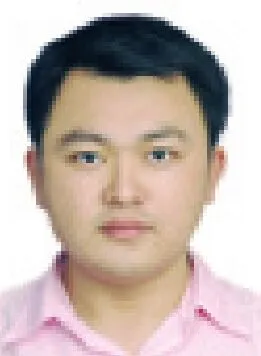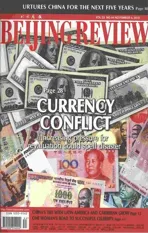An International Balancing Act
2010-10-14ByCHUHAO
By CHU HAO
An International Balancing Act
By CHU HAO
Despite improvements in Viet Nam-U.S. relations, Viet Nam seeks to strike a balance between China and the United States

E xchanges between the United States and Viet Nam have continued to grow since the two countries normalized diplomatic relationship in 1995.Their bilateral relationship has also improved steadily.
A fter Barack Obama took office, Washington declared it would focus on its relationships in Southeast Asia.The United States concentrated mainly on Viet Nam and Indonesia. Since the start of 2010, the U.S.-Viet Nam relationship has heated up so much that it has now gained worldw ide attention. Nowhere is this more obvious than in the countries bordering the South China Sea.
Im p roving relations
Politically, the two nations have become much closer. U.S. Secretary of State Hillary Clinton visited Hanoi to attend the celebration of the 15th anniversary of their bilateral relations and to participate in the ASEAN Regional Forum (ARF) in July. She also visited Viet Nam before the East Asia Summ it(EAS) at the end of October, in order to strengthen bilateral cooperation. Viet Nam,the current ASEAN chair, invited the United States to join the EAS, hoping to balance China’s influence in Southeast Asia.
The tw o nations’ bilateral m ilitary cooperation has also widened. Their militaries first cooperated in searches for m issing U.S. soldiers after the Viet Nam War. The cooperation now includes training military personnel for Viet Nam, offering military assistance and participating in maritime search and rescue. The U.S. destroyer,USS John McCain, visited the central Vietnamese port city Da Nang on August 10, marking a new high point in the relationship.
Bilateral economic cooperation has made remarkable progress, as well. The pair’s trade volume increased to $15 billion in 2009,7.5 times that in 2001. According to Viet Nam, its export volume to the United States is expected to reach $14.2 billion this year,a 15-percent increase from last year. The Export-Import Bank of the United States has designated Viet Nam as one of the nine most important countries w ith which the United States is developing a trade relationship. The United States is the biggest investor in Viet Nam and Vietnamese statistics show the United States invested $318 million in Viet Nam from January to May. This accounted for 15.7 percent of the country’s new ly approved foreign investments.
The two countries are undergoing civil nuclear cooperation negotiations and are close to reaching an agreement on the sharing of nuclear fuel material and nuclear technologies. While those in Washington usually place strict lim its on uranium enrichment locations w hen signing such agreements, they have thought about allowing Viet Nam to do its own enrichment.
Hanoi’s aspirations
Viet Nam has been one of China’s most adamant contenders in the South China Sea territorial disputes. Viet Nam’s territory is a narrow strip running from north to south,and most of its coast is on the South China Sea. Strategically, from both economic and m ilitary standpoints, the South China Sea is of greater significance to Viet Nam than to many other nations. Therefore, one of Viet Nam’s diplomatic focuses is to make the South China Sea territorial disputes an international or multilateral issue. It attempts to convince other nations to submit the issue to the UN, despite China’s objections.
Viet Nam is aware that, when it comes to this issue, it cannot confront China alone, and the nation is attempting to utilize the United States’ strength to balance Chinese influence. Senior leaders of the ruling Communist Party of Viet Nam are suspicious of U.S.involvement, but feel Washington w ill inevitably help to balance China in the region.The country is afraid China w ill call for the return of all South China Sea islands and islets, so it strongly supports Hillary Clinton’s statement about U.S. national interest in the South China Sea at the ARF. Malaysia’sSin Chew Dailysaid ASEAN mentioned the South China Sea issue because Viet Nam is the chair, and has U.S. support. The UnitedStates went along, hoping to control China,whose strength continues to grow.

A LARGER CONFERENCE:The first ASEAN Defense M inisters’ M eeting Plus opens in Hanoi on Oc tober 12. The 10 ASEAN nations participated, as d id China,Japan, the Repub lic o f Ko rea, Ind ia, Australia,New Zea land, Russia and the United States
Pro-U.S. segments of the Vietnamese population also act to push forward relations w ith the United States. During the Viet Nam War, the United States not only cultivated pro-U.S. influence, but also invested large amounts of capital in the nation, infiltrating the local economy. Large amounts of Vietnamese refugees have also helped to improve the bilateral relationship since their diplomatic normalization. Some Vietnamese are w illing to further contact w ith Westerners, as their ideas and living habits were Westernized from the long-term colonial influence of France. These factors have driven the development of the U.S.-Viet Nam relations.
A U.S. return
When Viet Nam voiced a desire to develop a relationship w ith the United States,it was met w ith sim ilar feelings from the U.S. side. In the United States, some officials decided territorial disputes between China and Viet Nam could be used to increase U.S. influence in the Asia-Pacific region.W ashington thinks political and m ilitary interference in the region can make up for its stagnant economy, compared to China. This should sit well w ith Obama, who prom ised when he took office to return to Asia as a moderator of disputes.
Hillary Clinton’s Viet Nam trip helped to explain the U.S. stance. Washington plans to establish stable relationships w ith India and Viet Nam to deter China. This reflects the duality of U.S. policy, which fluctuates between cooperation and containment.
A fter announcing a return to Southeast Asia, Washington conducted a series of acts to enlarge its involvement in the region,including holding the first U.S.-ASEAN summ it and joining the EAS. Due to Viet Nam’s important geopolitical location, the United States considers Viet Nam to be key to containing Chinese influence. It w ill use Viet Nam’s growing influence in ASEAN to attempt to interfere in the South China Sea issue and East Asia cooperation, so as to prevent Chinese influence from grow ing.
Viet Nam, on the other hand, hopes to use the United States to gain more influence in regional and international affairs.Common strategic interests have quickly moved the bilateral relationship to new heights. Their improving relationship is based on long-term interests, and has not been rushed.
Nota triangle
There are still many obstacles to the development of the U.S.-Viet Nam relationship. The Viet Nam War w ill always cast a long shadow. Unable to fully forget the pain of the war, Viet Nam welcomes some U.S.m ilitary cooperation, but opposes the stationing of U.S. m ilitary forces in the country and told the United States it could not rent the Cam Ranh Bay as a m ilitary base. A lso,the United States continually criticizes Viet Nam’s human rights and political conditions.The U.S. media believe Viet Nam cannot become a reliable partner until it realizes“democracy” and “freedom.”

CLOSER M ILITARY RELATIONS: Vietnamese o fficia ls g reet U.S.De fense Sec retary Robert Gates upon his arriva l in Hanoi fo r a visit on Oc tober 10
Chinese elements w ill also influence the developing relationship. Econom ic, geographic and political conditions mean Viet Nam must rely on China. Many Vietnamese officials believe China has set a good economic and political example for Viet Nam,and would never want to risk a direct collision w ith China.
Viet Nam pays great attention to balancing China and the United States, and cares about continuing a relationship w ith China while developing relations w ith the United States. For example, during the ARF in July,Viet Nam arranged for the general secretary of the Communist Party of Viet Nam Central Comm ittee to meet w ith the Chinese foreign minister and its prime minister to meet w ith the U.S. secretary of state. The arrangement showed it cherishes the relationship w ith China. It believes that although China and the United States have disputes on certain issues, long-term cooperation is a common desire. Since the two large countries are unlikely to encounter serious frictions in the near future, Viet Nam believes it would be unwise to favor either.
Viet Nam w ill keep a skillful balance between China and the United States. The country’s Vice Defense M inister Nguyen Chi Vinh stressed on August 25 that Viet Nam w ou ld never be a m ilitary ally of any country. He said his country would not rely on the United States to reach goals, and said the world should not view the relationships among Viet Nam, China and the United States as a triangle. The Viet Nam-China relationship is quite different from the Viet Nam-U.S.—or any other—relationship. This quite clearly reflects Viet Nam’s diplomatic policy.
The author is a researcher w ith the China Institutes of Contem porary International Relations
